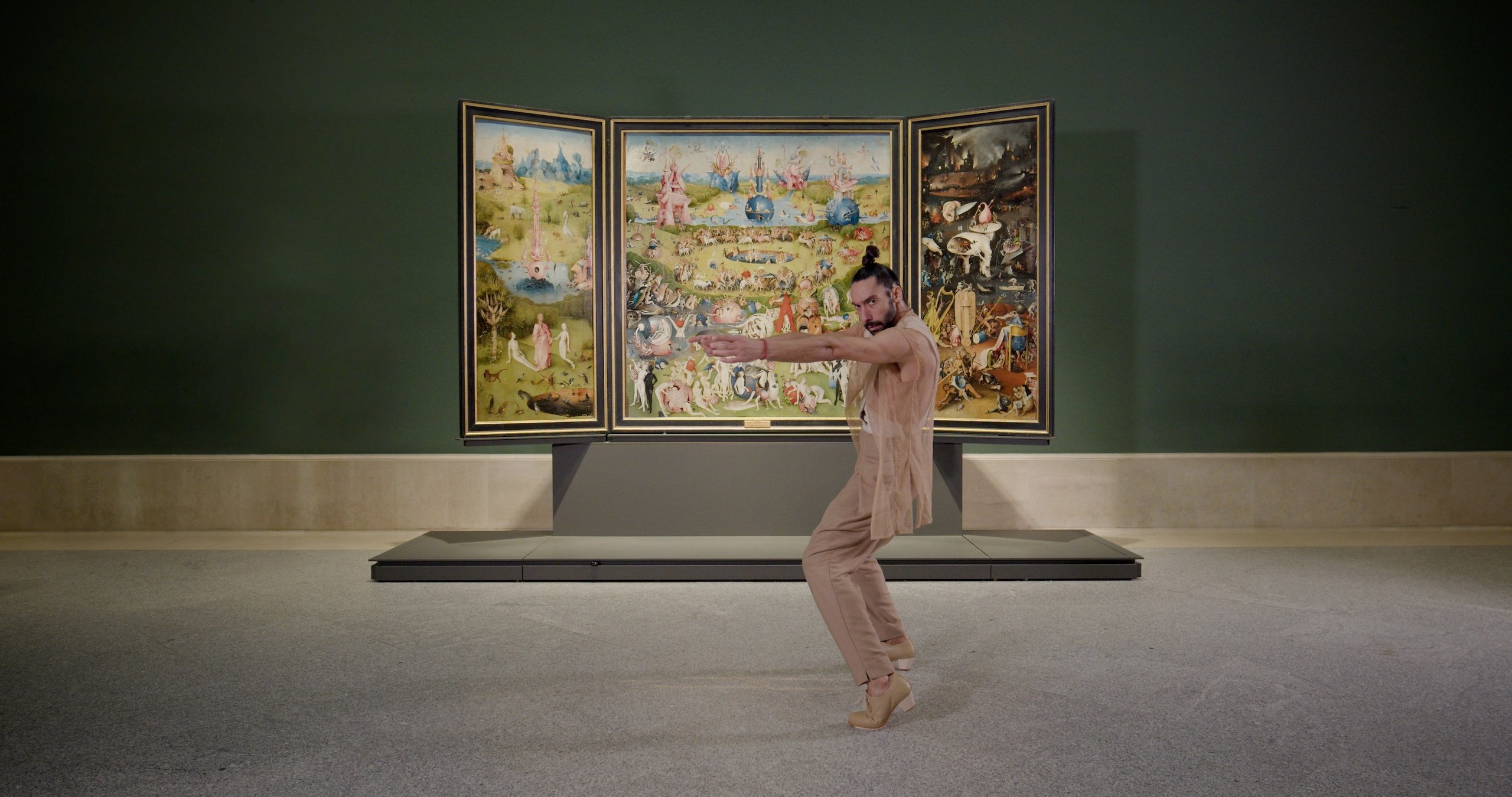
On the 550th anniversary of the day that the Netherlandish painter first shows up in the historical record, the Prado Museum has named April 5 Hieronymous Bosch day, because why not? The artist is one of those rare painters whose very name has taken on an adjective form, as people apply the descriptor “Boschian” to wild, hallucinatory scenes like one sees in one of his best-known works, the Garden of Earthly Delights triptych (1490–1500), which resides at the Madrid institution. So, he is certainly worthy of the museum’s effort to raise awareness of him, even if it might seem redundant to anyone who has taken Art History 101.
Bosch is perhaps best known for works that illustrate religious concepts with a singular intensity, such as the Earthly Delights triptych, which shows Heaven on the left panel and Hell on the right, while the center panel depicts “a false paradise given over to the sin of lust,” as the Prado describes it. He also painted allegorical scenes that are hard to parse for the modern viewer but that link up closely with didactic literature and sermons of the late medieval period, as well as biblical and folkloric texts.
Because King Philip II of Spain collected his works, the Madrid museum owns several examples by the artist, including, in addition to the Earthly Delights triptych, The Adoration of the Magi (ca. 1485–1500), The Seven Deadly Sins and the Four Last Things (ca. 1500), several pieces by his workshop or copies of his paintings (due to his fame during his lifetime, his paintings were frequently copied and faked, said the museum), and several works on paper.
Only about two dozen paintings are certain to have been created by Bosch, as well as a handful of works on paper. Other paintings reside in institutions such as the Princeton University Museum of Art in New Jersey and the Nelson-Atkins Museum of Art in Kansas City.
To mark the occasion, the museum has released “At Bosch’s Feet,” a video of dancer Eduardo Guerrero creating what the museum calls “a universe of forms, volumes, and movements” (which seems a little grandiose since “universe” means literally all of time and everything in existence, but okay).
The Prado has also created a page on its website devoted to the artist; within it is a neat interactive feature with pop-up text bubbles that illuminate various aspects of the master’s work and give historical context.
Very little is known about the artist’s life, relative to his fame. No personal papers were left behind, and his exact birthdate is unknown. Based on a drawn portrait (possibly a self-portrait) from 1516, it is estimated he was born ca. 1450. Named Jhieronymus van Aken at birth, Bosch was born in Brabant in the Netherlands, into a prosperous family in one of the wealthiest regions of Europe in a period of stability under the ruler Philip the Good. His forebears several generations back were all artists, and he may have learned how to paint from his father.
He first shows up in historical records on April 5, 1474, when he and other family members served as witness to his sister Katharina’s sale of a mortgage on a house. He spent most of his life in the city of ‘s-Hertogenbosch, where, in 1486 or ’87, he joined the Brotherhood of Our Lady, a prestigious philanthropic religious organization of about 40 influential people from s’-Hertogenbosch and hundreds more throughout Europe.
He married Aleid Goyaerts van den Meervenne around 1480 and moved to the town of Oirschot, where they had inherited a home from her family. The Brotherhood of Our Lady recorded his death in 1516; a funeral mass was held in his honor in August of that year. He may have been the victim of an epidemic of cholera-like symptoms that hit the city that year. His burial place is unknown.
In 2016, the New York Review of Books pointed out that despite two major exhibitions and scientific study of all his known works employing new technology, Bosch “remains as mysterious as ever.”